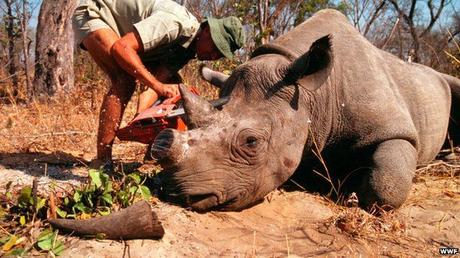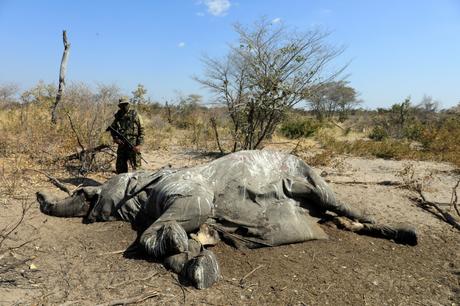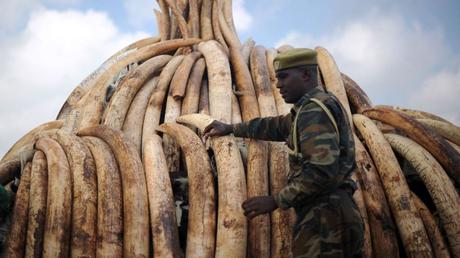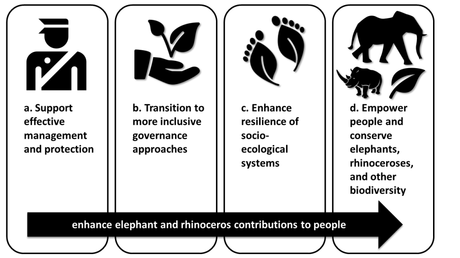No matter most people’s best intentions, poaching of species in Sub-Saharan Africa for horn and ivory continues unabated. Despite decades of policies, restrictions, interventions, protections, and incentives, many species of elephant and rhino are still hurtling toward extinction primarily because of poaching.
Clearly, we’re doing something heinously wrong.
Collectively, we have to take a long, hard look in the conservation mirror and ask ourselves some difficult questions. Why haven’t we been able to put any real dent in the illegal trade of poached elephant ivory and rhino horn? How many millions (billions?) of dollars have we spent seemingly to little avail? Why haven’t trade bans and intensive security measures done the trick?

The reasons are many, but they boil down to two main culprits:
- neo-colonialist sentiments driven by the best intentions of mainly overseas NGOs have inadvertently created the ideal conditions for the poaching economy — what we term poachernomics — to thrive by ensuring the continued restriction of legal supply of wildlife products; and
- shutting off conservation areas to local people and directing the bulk of ecotourism profits away from source communities have maintained steady poaching incentives in the absence of other non-destructive livelihoods.
In our new paper — Dismantling the poachernomics of the illegal wildlife trade (led by Enrico Di Minin of the Universities of Helsinki and KwaZulu-Natal, and co-authored by Michael ‘t Sas-Rolfes of the University of Oxford, Jeanetta Selier of the South African National Biodiversity Institute, Maxi Louis of the Namibian Association of Community-Based Natural Resources Management Support Organizations, and me) — published quietly in late 2021, we describe how poachernomics works, and why our efforts to incapacitate it have been so ineffectual.
First, what is poachernomics?
Poachernomics can be described as the unidirectional flow of goods from source countries where elephants and rhinos are poached for their ivory and horns, respectively, through a transit country, and finally to a consumer country. Elephant and rhino poaching intensity correlates with ivory demand in Far East Asia, local corruption and poverty, and a lack of effective protection in source countries.
Demand-side of the equation
Purchasing motivations are central components of poachernomics that determine market size and persistence. The market itself influences prices that incentivise profit-driven poaching and illegal trade. If consumers do not accept trade bans as legitimate, are largely unwilling to switch to substitute products, and are therefore insensitive to price increases, ban efficacy is severely undermined — they can in fact raise total market value and the profitability of illegal supply rather than reduce it.

Intensifying restrictions and destroying product stocks can perversely raise the desirability and therefore prices of these products through a so-called ‘snob’ effect. For rare, wild species, this can create further poaching pressure as a feedback loop, causing a potential extinction vortex known as the anthropogenic
Allee effect (coined by my good friend, Franck Courchamp). This can be exacerbated by market speculation via the stockpiling of illegally obtained products in an effort to manipulate black-market prices.
Now, appreciating that much of this supply chain is run by organised crime networks, what does poachernomics remind you of? Well, it reminds us of the illegal narcotics trade, and we all know how successful America’s (and her sycophants’) ‘war on drugs’ has been. Outright bans and excessive enforcement have driven the narcotics trade to unheralded heights of illegal activity because the demand does not dissipate as originally intended. Many organised crime networks are involved in the trade of both illegal wildlife products and narcotics.
Organised crime finds poachernomics so lucrative because of poor governance throughout the
supply chain, weak sentencing for convicted criminals, the affordability of fines, the negligible risk of getting caught and receiving punishment, and the high profitability of the crime.
Supply side of the equation
Local people have few positive incentives to conserve elephants and rhinos because in most supply countries, these species are state property and perceived as a symbol of colonial authority. With limited or no devolution of property rights over wildlife, the species hold limited or no value to local people. This means that their main economic value derives from harvest-based extractive uses and ecotourism. While the revenue from wildlife-based tourism can be substantial and potentially used to offset anti-poaching costs large-scale ecotourism is viable only in countries with good governance and in more accessible areas, with limited potential in many other areas.

Poverty, and especially economic inequality, in source states are central drivers of poaching. Local poachers wear the highest risks of being fined, incarcerated, or even killed by the authorities or by the animals they target, but the promise of atypical recompense makes these risks acceptable. Given that the incentives are so high, even when anti-poaching activities are effective in apprehending poachers, there are many other poachers ready to replace them.
Poverty is a multifaceted problem encompassing more than lack of alternative economic opportunities. Poaching might not only be driven by the need for an income, but could instead be a means of seeking and affirming identity, status, lifeways, custom, and local prestige.
What we need to do differently
There’s certainly no silver bullet to dismantling poachernomics, but we can be more effective if we appreciate why it persists. While influencing consumers will always remain an important tool, the long-term of effect of this alone will only slightly weaken poachernomics.
Transnational policing aimed at dismantling criminal networks engaged in trafficking should remain a priority, although again, environmental-crime markets are resilient and tend to persist over time.
For demand-inelastic markets like illegal wildlife products and narcotics, bans are typically undermined by corruption, so many economists advocate regulation supported by taxation as a preferred policy measure. A legal trade is therefore an instrument that could potentially both depress scarcity-driven black-market prices that make poachernomics profitable and worth the risk (especially for rhino horn), and reduce the incentives to engage in the illegal trade by providing finance and economic incentives at relevant local scales to strengthen anti-poaching efforts.

Most importantly, however, enhanced management of protected areas — and that better integrate local
actors and institutions in conservation efforts — are especially needed. This requires local community members to be more integrated in conservation decision-making. Local people should feel more empowered and benefit more directly from the sustainable management of — or otherwise feel a sense of custodianship toward — elephants and rhinos.
Local community proprietorship of the land and its associated biodiversity should be pursued where possible. Without incentives that outweigh the high costs of conservation, interventions might be less
resilient to increasing economic pressures to poach.

